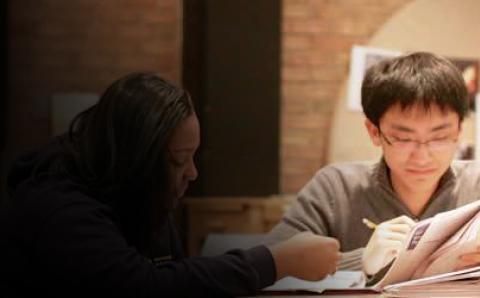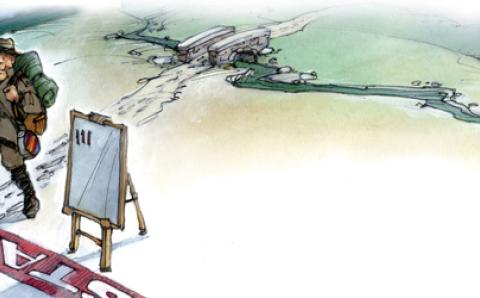In North America, the standard railroad gauge (the distance between the rails) is exactly 4 feet 8 1/2 inches. Do you have any idea why?
That’s how they built them in England, and many of our railroads were built by English expatriates. Why did the English build them that way? Because the first rails were laid by those who had built the tramways, and that’s how the trams were built. The trams were built that way because the builders used jigs and tools they had used previously for building wagons. And—you guessed it—that’s how wagons were built.
Why? Because that’s how far apart the ruts were spaced on existing roads. And that was the case because the first long-distance roads in Europe were built by imperial Rome for its legions. The ruts the wagon makers had to match were created by Roman war chariots. And those chariots were all alike in the matter of wheel spacing.
Now you know: the standard railroad gauge comes from the original military specs for an imperial Roman war chariot. It’s a habit that goes back nearly 2,000 years.
Habits are not necessarily bad things, unless you forget why you do them. Then you’re just stuck in a rut. Paul urges the Ephesians—and us—to engage in the habit of prayer. “Always keep on praying” (Eph. 6:18), he says, but make it vibrant, active, and lively. Anything but a rut to get stuck in.
In that same chapter Paul outfits the Christian in the battle gear of the Lord. “And pray . . .” he adds. Prayer is not simply a piece of the Christian’s gear. It is the atmosphere in which we put on and wear it. We are to pray “on all occasions” and use “all kinds of prayers” and “always keep on praying.”
Paul piles up the adjectives to show that prayer is supposed to be more than an occasional practice. It is to be a habit of the heart—all the time, in all ways, at all hours and “for all the Lord’s people.”
Picture a room with hundreds of your brothers and sisters gathered in one place practicing this habit—always, on all occasions, using all kinds of prayers, and concerned for all God’s people.
That’s something you will be able not only to see but become a part of by attending the second denominational prayer summit on April 15-17 at All Nations Church in Lake View Terrace, Calif.
These three days are designed to give you a taste of what Paul advocates in Ephesians 6:18—praying not just once a year in a faraway place but in such a way that you will be inclined to bring the recipe home and bring others into a circle of prayer where you live.
Albrecht and Franz were poor, young, struggling artists. They agreed that one would support the other while the other studied and then reverse roles. Franz, the first to support his friend, engaged in manual labor that left his fingers stiff and twisted.
One day Albrecht came across Franz kneeling, his gnarled hands folded in prayer. He was praying for the success of Albrecht, though he no longer had any hope himself of enjoying a career in art. Albrecht, whose last name was Dürer, sketched those folded hands, a work still known as “The Praying Hands.”
In this story, the man behind the hands was the real artist. You and I can regularly reproduce that scene by praying “on all occasions with all kinds of prayers and requests . . . always” and “for all the Lord’s people.”
About the Author
Rev. Joel R. Boot is the executive director of the Christian Reformed Church in North America.







